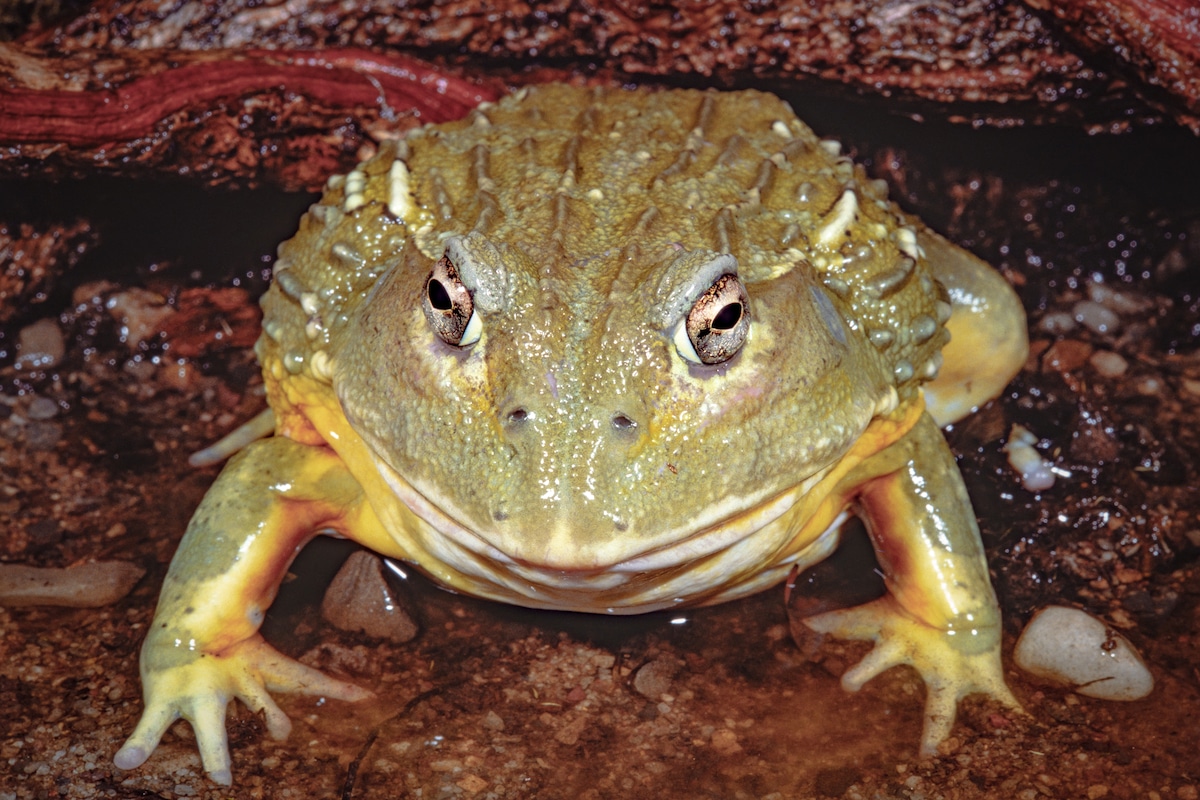Appetite for Frogs’ Legs in Europe ‘Driving Species to Extinction’

 Why you can trust us
Why you can trust us
Founded in 2005 as an Ohio-based environmental newspaper, EcoWatch is a digital platform dedicated to publishing quality, science-based content on environmental issues, causes, and solutions.
Frogs’ legs are most frequently associated with French cuisine, but records show that the culinary delicacy was commonly consumed in southern China from at least the first century AD. The earliest records of the French consuming frogs’ legs date from around the 12th century, when French monks began eating them during Lent, as they were not considered meat, reported The Guardian.
Frogs’ legs are still a popular dish in many countries, and, according to “Deadly Dish,” a new report by German animal conservation organization Pro Wildlife and French NGO Robin des Bois, the gastronomic popularity of frogs’ legs in the European Union (EU) has led to the depletion of frog species in Turkey, Albania and Indonesia, a Pro Wildlife press release said.
“In the 1980s, India and Bangladesh initially delivered frog legs to Europe, but Indonesia has taken over as the largest supplier since the 1990s. In the Southeast Asian country, as in Turkey and Albania, the large frog species are disappearing one after the other — the whole thing is a fatal domino effect for species protection,” co-founder of Pro Wildlife Dr. Sandra Altherr said in the press release.
At least 17 percent of amphibians — 1,200 species — are internationally sold, according to Manager of International Union for Conservation of Nature (IUCN) Red List Assessments Jennifer Luedtke, as The Guardian reported.
The Habitats Directive prohibits the catching of native wild frogs in the 27 EU member countries, but none of the countries impose a restriction on imports.
Pro Wildlife said 70 percent of imported frog meat goes to Belgium, which then sends most of their imports to France. France imports 16.7 percent themselves and the Netherlands brings in 6.4 percent.
Seventy-four percent of EU frog imports come from Indonesia, while Vietnam supplies 21 percent, Turkey four percent and Albania 0.7 percent.
As the biggest importer of frogs’ legs in the world, the EU brings in about 4,070 tons each year, or about 81 to 200 million mostly wild-caught frogs. Species with larger legs are especially sought-after, making them more vulnerable to being over-sourced.
The biggest edible water frog in Turkey, Pelophylax caralitanus, commonly known as the Anatolian frog, is currently listed as “near-threatened” by the IUCN Red List of Threatened Species. According to The Guardian, scientists have said the species could be extinct in Turkey as early as 2032. Other frog species imported to the EU from abroad are also threatened.
Albania’s Scutari water frog (Pelophylax shqipericus) is currently a highly-endangered species, said Pro Wildlife.
“If the plundering for the European market continues, it’s highly likely that we will see more serious declines of wild frog populations and, potentially, extinctions in the next decade,” Altherr said, as The Guardian reported.
Consumption of frogs’ legs in other countries like China and Cambodia has led to IUCN classifications of vulnerable and near-threatened for some species. Less than 250 full-grown Togo slippery frogs are believed to exist, and the giant African bullfrog (Pyxicephalus adspersus) could already have become extinct.
The legs of most frogs are cut off with scissors or axes without anesthesia, said Pro Wildlife, as the Daily Mail reported.
Altherr called for the cessation of this and other inhumane practices, reported The Guardian.
“Most frogs have their thighs severed with an ax or scissors in unison – without anesthesia. The upper half is disposed of while it is dying, the legs are skinned and deep-frozen for export,” Altherr said in the press release.
Robin de Bois and Pro Wildlife would like EU countries to restrict their imports of frogs’ legs while making sure that frogs’ legs commodities are able to be traced, The Guardian reported. They would also like EU members to develop endangered species listing proposals for the Convention on International Trade in Endangered Species (CITES).
In addition to harming the frogs themselves, over-exploitation of the amphibians and the resultant declines in their numbers have a direct effect on the ecosystems in which they live.
“Frogs play a central role in the ecosystem as insect killers – and where frogs disappear, the use of toxic pesticides increases. So the frog leg trade not only has direct consequences for the frogs themselves, but also for nature conservation,” said President of Robin des Bois Charlotte Nithart, as the Pro Wildlife press release stated.
Subscribe to get exclusive updates in our daily newsletter!
By signing up, you agree to the Terms of Use and Privacy Policy & to receive electronic communications from EcoWatch Media Group, which may include marketing promotions, advertisements and sponsored content.

 233k
233k  41k
41k  Subscribe
Subscribe 




